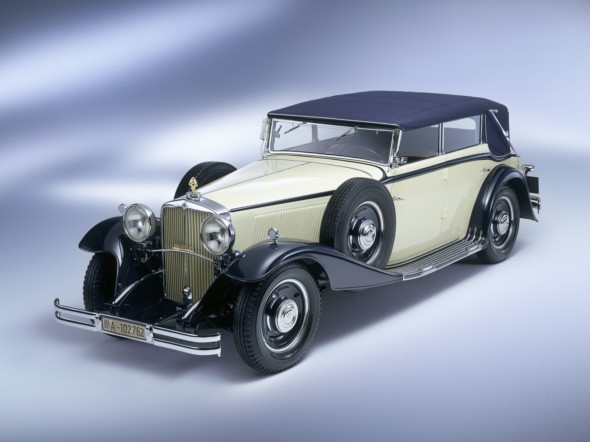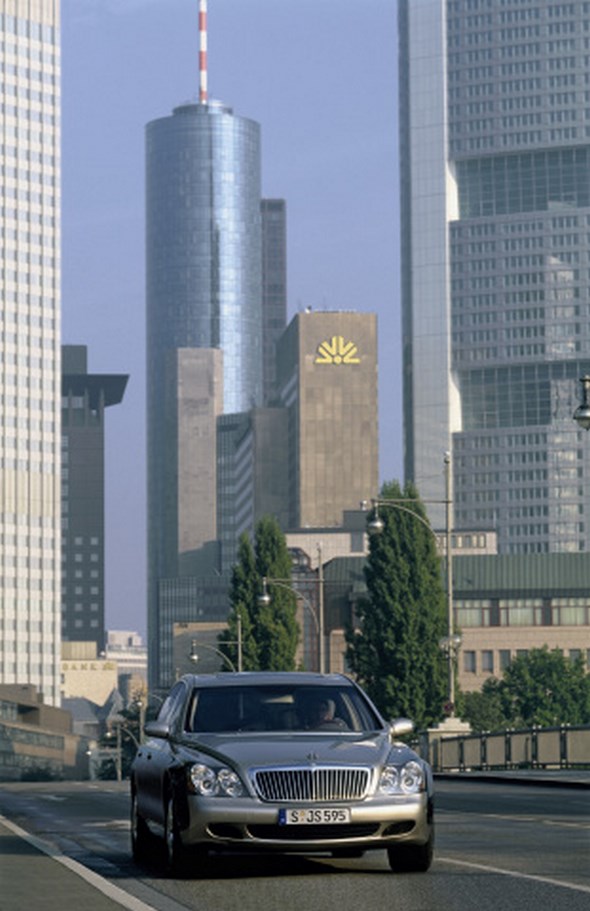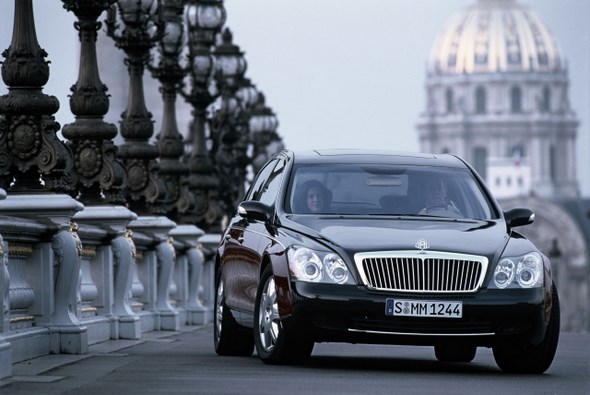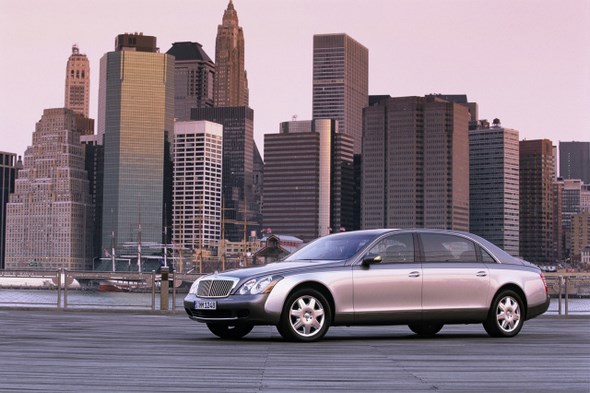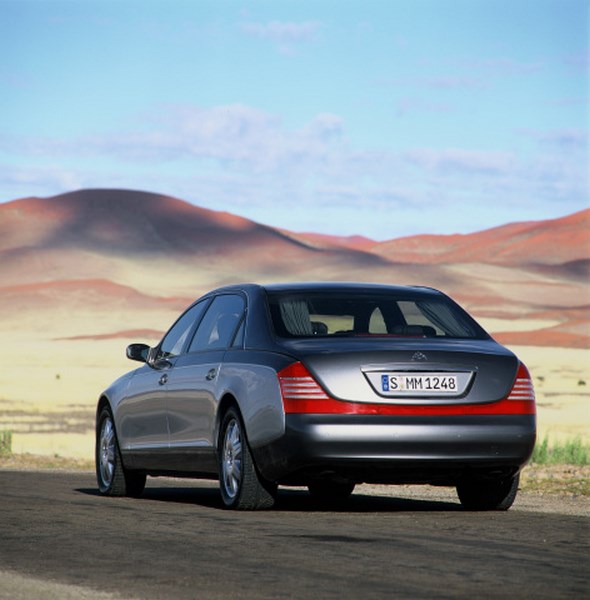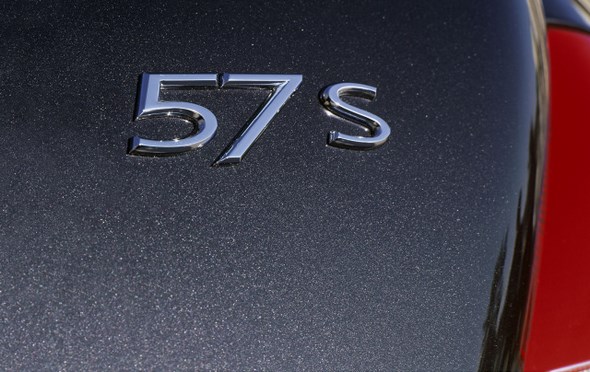Mercedes W240 Maybach 2002 – 2012

Maybach – the German high-end luxury car brand is unveiled to the public
- The legendary car brand comes back to life after some 60 years
- Market premiere of the new top-class German car set for autumn 2002
- Maybach is a synonym for superior quality and peerless luxury
- Saloons to be built individually according to customer requirements
- State-of-the-art technology to be supplied by sister brand Mercedes-Benz
- New Centre of Excellence to provide individual customer service
- Cars to be produced at the DaimlerChrysler plant in Sindelfingen
MM

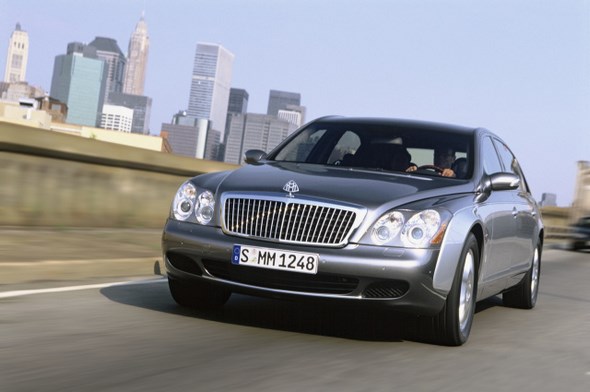
A brochure on the luxury car brand produced in 1934 described its products as “cars of the greatest elegance and strength which you would give your last wish to own”.
DaimlerChrysler felt an obligation to live up to the billing.
With over 100 years of experience and technical expertise in the development and production of luxurious saloons through its Mercedes-Benz brand, the DaimlerChrysler Group was in the ideal position to revive the Maybach name.
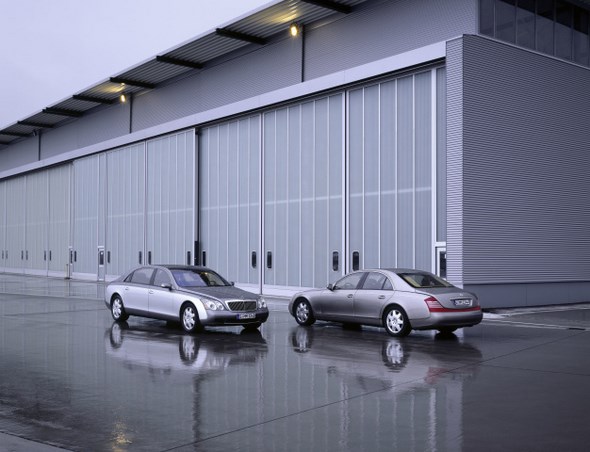
The plan to build a high-end luxury car with the Maybach badge hinged on close cooperation with Mercedes-Benz.
Maybach’s sister company is a leading figure in the development of innovations and sets standards in terms of safety, quality, reliability and durability.
The new Maybach can only benefit from this technological head start.

Pioneering state-of-the-art technology coupled with unparalleled prestige
Mercedes-Benz and Maybach were Germany’s foremost luxury car brands in the 1920s and 30s, and a return to this status quo looks to be on the cards for the years to come.
The future will see the two brands advancing hand-in-hand under the umbrella of the Daimler-Chrysler Group: Mercedes-Benz – the technological pace-setter and the world’s most successful manufacturer of premium cars in high-growth market segments and Maybach – the brand for first-class, extremely individual, high-end luxurious and prestigious saloons, which combine technical perfection with innovative Mercedes technology.

The symbiosis of ground-breaking Mercedes developments with the exclusivity and individuality you expect from the Maybach name has again conjured up an automotive gem of peerless stature – the ultimate in automotive construction.
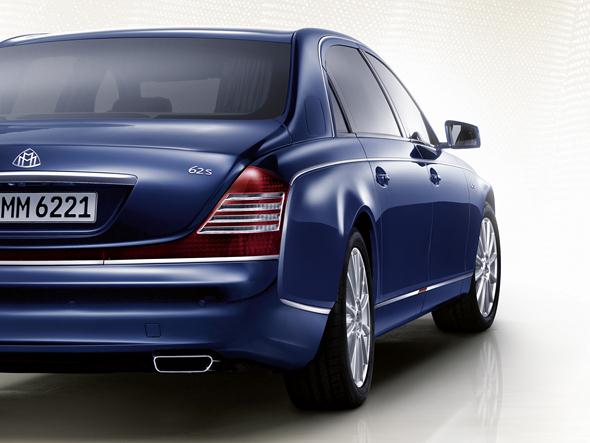
Wilhelm Maybach and Gottlieb Daimler – automotive pioneers
Mercedes-Benz and Maybach have always had a great deal in common. Wilhelm Maybach, a long-time companion of Gottlieb Daimler and director of Daimler-Motoren-Gesellschaft (DMG), was the spiritual father of the first Mercedes built in 1901, the template for all modern-day passenger cars.
For this reason, Maybach was much admired and known as the “king of design”.
In 1909 he teamed up with Graf Ferdinand von Zeppelin to found “Luftfahrzeug-Motorenbau GmbH”, initially producing power units for the famous Zeppelin airships.
In 1918 “Luftfahrzeug-Motorenbau GmbH” spawned “Maybach-Motorenbau GmbH”, based in Friedrichshafen on the banks of Lake Constance.

Here in 1919 development began of the much talked about Maybach luxury car, under the stewardship of Wilhelm Maybach’s son Karl. The first test vehicle, the “W 1” was built with a Mercedes chassis.

Years later, Maybach’s firm yielded a new company “Motoren- und Turbinen-Union Friedrichshafen” (MTU), which is now part of the MTU / Diesel Power Train Unit of DaimlerChrysler.

Two Saloons with luxury fittings give first-class levels of comfort
The combination of cutting-edge technology and tradition has brought the Maybach luxury car brand back to life within the DaimlerChrysler Group and fuelled high expectations for the future.
The celebrated name contains a sense of both homage and duty. The target today is as ambitious as ever: to develop the best cars on the market.
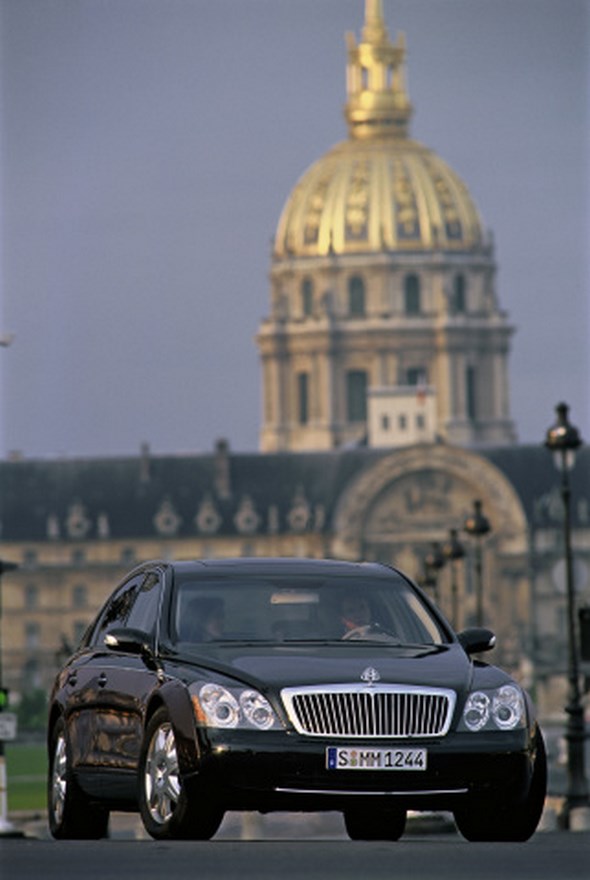
For the second time in history, Maybach is out to set the standard in the exclusive luxury car segment. It will celebrate its premiere in the autumn of 2002.
There are two variants of this masterpiece to choose from. With the successor to the legendary “Zeppelin”, the brand is building on its tradition of creating spacious saloons and presenting a luxury car which opens up a whole series of new dimensions.

This outstanding vehicle is 6.16 metres in length and has a 3.83-metre wheelbase. The rear passengers enjoy the opulence of individual seats, which they can adjust into an extremely comfortable reclining position with automatically extending leg and foot supports.
In the interests of entertainment and information, the rear compartment is also equipped with two flat-screen monitors, which are linked up to the standard-fitted TV receiver and DVD player.
The second Maybach variant, with a 5.72-metre-long body, sets new standards with the range of exclusive fittings it features as standard.
It also includes a TV/DVD entertainment system in the rear, Dolby surround sound system, four-zone climate control and multicontour seats for all passengers.

One of the hallmarks of the Maybach is its two-tone exterior paintwork – several hundred possible combinations mean each owner can have a totally individual look.
Both model variants are powered by the newly developed 405 kW/ 550-hp “Type 12” Maybach engine.
With 5.5-litre displacement, bi-turbocharging and 900 Newtonmetres of torque, this power unit has all the ingredients to deliver superior driving performance, whilst providing the high level of comfort expected of the luxury car brand.
The electronically controlled air suspension and high-performance electrohydraulic brake system Twin-Sensotronic Brake Control (SBC™) are further innovations from the Mercedes Technology Centre which set the Maybach apart.
Extensive communication with customers in all corners of the Earth
The aim of the Maybach prestige luxury brand is to establish itself at the top of a small, but highly distinguished market segment, which experts expect to show further potential for growth over the next few years.
Over the course of the last three years the Maybach project team has closely analysed both the future development of the market and the demands and expectations of customers in the luxury car segment.
During the development phase, the team invited potential customers from around the world to give them their views.
Out of the several hours of conversation that took place came a host of valuable ideas for the design of the Saloon.
In other words, Maybach already has an extremely accurate picture of its customers’ requirements and is well aware of the demands made on a genuinely superb car in this class.

The Centre of Excellence is the heart of the new luxury car brand
Technical perfection and stylish elegance share top priority with the level of service offered to the extremely demanding customers.
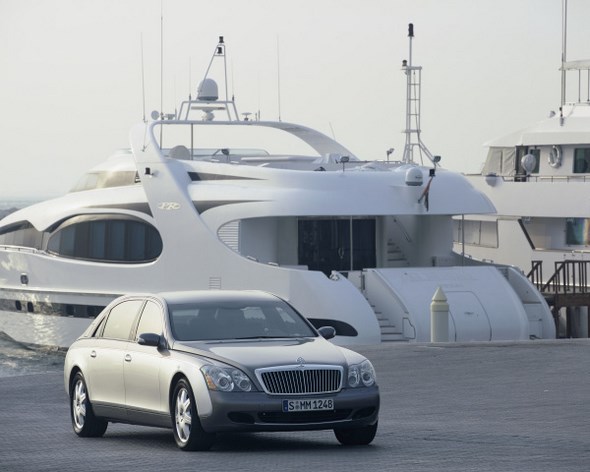
As in earlier times at the Maybach company, the customers’ requirements still represent the bottom line.
As a rule, a Maybach Saloon is not something one buys from a catalogue and equipment list. The exact make-up and fittings of this luxury car are the result of an extensive exchange of ideas between the customer and the car’s designers and engineers.

The meeting point for the two groups will be the Centre of Excellence in Sindelfingen, the result of investment from DaimlerChrysler totalling some ten million euros.
From the summer of 2002, this is where the heart of the new luxury car brand will beat.
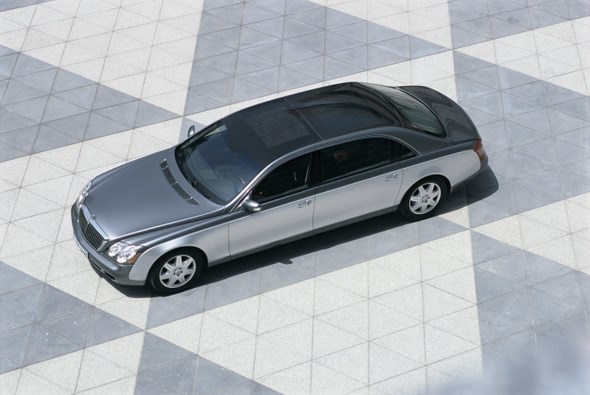
The Centre of Excellence accommodates a Maybach studio over an area of around 2200 square metres. Here, customers can look through a remarkable selection of top-quality materials, exclusive colours, and innovative technical details.
This wide variety of exquisite woods, natural stone, fabrics, leathers and other superior items of equipment forms the basis for the extremely personal and unique finish of each and every Maybach Saloon.
Specialist staff at the prestige car maker are in constant communication with the customer in order to realise even more exacting or more detailed requests.
With the Centre of Excellence at close proximity to the Mercedes Technology Centre and to Maybach Manufaktur HQ, everything is set up to deliver the best possible expert advice, with almost no limits on the personalisation of finish and fittings of every Maybach.
This means that every Saloon becomes a valuable one-off, characterised exclusively by the personal style and taste of its original owner.
Manufacture aimed at fulfilling the most individual customer requests
Whilst, in years gone by, Maybach’s exclusive clientele would have the body of their car constructed as they wanted it by a specialist company, the new-generation luxury Saloon will be assembled in its entirety at the DaimlerChrysler plant in Sindelfingen.
The V12 power unit will be built in the engine factory at the Berlin plant, whilst the transmission and axles will be made at the original Mercedes plant in Stuttgart-Untertürkheim.
Hand-craftsmanship in the manufacture of the body and the nature of the assembly process make it possible to incorporate an exceptionally wide variety of individual touches.

Maybach customers are kept constantly involved during the period – some four weeks – in which their top-quality car is in production.
They can even go to Sindelfingen to witness their Saloon being made, and develop further ideas regarding customised finishes and fittings with manufacturing experts whilst they are there.
Manufacture of the Maybach will be underway in the summer of 2002. Every day up to seven units of the luxury car will be built – each one according to individual customer specifications.

An unprecedented concept for thorough customer service around the clock
At Maybach highly attentive and personal customer service has top priority at every stage – during the ordering process, the production of the car and, above all, after it has been delivered.
It was with this in mind that an unprecedented concept was developed which ensures an exceptionally individual, faultless level of service and the fulfilment of the most demanding customer requests.

The Personal Liaison Managers play a key role in customer service. Each manager is responsible for a very small group of Maybach owners, is ready with advice on all issues relating to the car and can also provide assistance in other ways – including organising visits to Maybach Manufaktur, planning vehicle services or booking entry passes for the next Formula 1 race – if the customer requests it.
The Personal Liaison Managers can be contacted at any time of the day or night by their customers – all the Maybach owner has to do is press a button on the car telephone keypad.
Maybach centres in three continents
The Maybach brand is set to spread across the globe. The Centre of Excellence in Sindelfingen will be joined by a worldwide network of advice and sales points, which Maybach customers will also be able to use to contact their Personal Liaison Manager:
- DaimlerChrysler is building a state-of-the-art Maybach centre on the roof of the “Am Salzufer” Mercedes sales and service outlet in the German capital Berlin, and in Munich the company is likewise constructing an exclusive sales and advice centre for the luxury car brand.
- Another ten Maybach centres are planned across Europe – in Belgium, France, Italy, Spain, Great Britain, the Netherlands and Switzerland.
- Service points for the new automotive brand will also appear outside Europe, for example in the Middle East, Japan, Hong Kong and the United States.
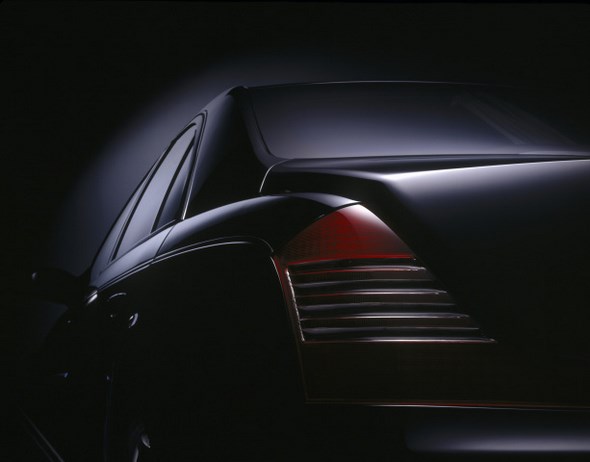
Individual customer advice services with innovative new systems
Customers who are not able to come into the Centre of Excellence to finalise the finish and fittings of their Maybach Saloon can use video conference facilities to speak personally to Maybach exerts from the areas of design, technology and manufacturing and be briefed on how things are going.
An innovative computer-aided advice system facilitates the presentation and selection of numerous interior trim elements, materials and colours using virtual reality technology.
Every Maybach centre across the world will be fitted with this cutting-edge system.
The customer can pick up their luxury car from the Centre of Excellence or a Maybach centre, as they wish.
Global logistics for servicing the Maybach
Maybach has set up some 50 service centres across the world to deal with maintenance and repairs for their cars. Highly qualified experts at the centres are responsible for all technical and logistical aspects concerning the car.
They aim to carry out a comprehensive service right down to the last detail, relieving the Maybach owner of all the stress when it comes to inspections or repairs.
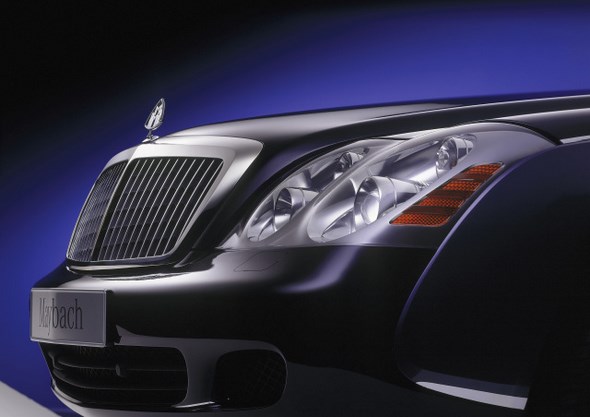
Every Maybach will be prepared with the highest level of protection and then transported either by truck or in special sea/air freight containers, depending on what the Personal Liaison Manager has agreed in advance with the customer, from wherever it is in use to the nearest available service outlet.
For this reason, the brand has worked with selected partners to develop a worldwide logistics concept which ensures that the vehicles are sent from the customer’s location to the service centre and back with the greatest care and speed.

The leading-edge equipment and fittings in the Maybach workshops, including the most efficient diagnosis systems, state-of-the-art tools and specially designed furnishings, comfortably fulfil the expectations placed on this new German luxury car brand.
If, however, a technical problem does surprisingly occur, Maybach customers can rely on a highly qualified team of experts, which will be on the spot in a matter of hours in any country and will provide fast and efficient assistance.

Maybach is offering its customers a four-year new-car warranty. Furthermore, mobilo-life, the life-long mobility warranty package from Mercedes-Benz, is also available for the new Maybach Saloon.

A look back at a glorious era in German automotive history
Maybach – an automotive brand becomes a legend
- The ultimate in automotive architecture
- Maybach and Mercedes at the summit of luxury car production
- Two German luxury car makers who have always had a lot in common
- Unbeatable quality and flawless construction for a discerning clientele
- “Zeppelin” Saloons were the largest German passengers cars available
- Only around 1800 Maybach cars were built in 20 years
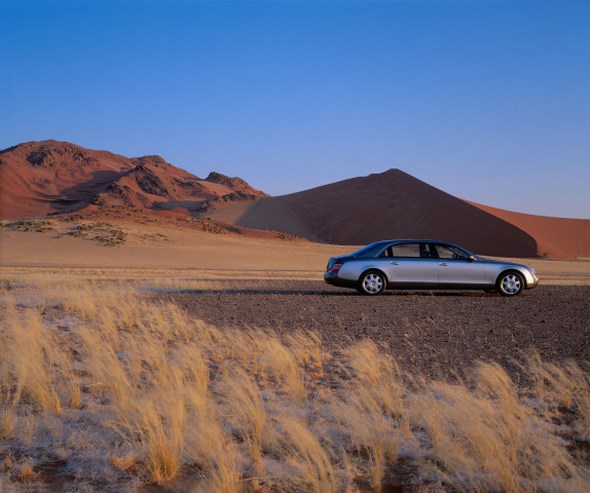
The Maybach name identifies one of the world’s most elegant and exclusive car brands. Then, as now, Mercedes was the model, and the first Maybach was actually a Mercedes – at least in part.
Indeed, in 1919 Karl Maybach constructed his first test car on the basis of a Mercedes chassis that he had acquired from army supplies.
That was really quite appropriate, since the first Mercedes had in fact been a Maybach. In 1901 a car with front-mounted aluminium engine, twin camshafts and pioneering honeycomb radiator – designed by Karl’s father Wilhelm Maybach, who was at the time chief engineer at Daimler-Motoren-Gesellschaft (DMG) – caused quite a stir.
It was to be the first Mercedes and the forefather of all modern passenger cars.
Maybach and Mercedes – as inseparable now as they were back then.
In the 1930s Maybach grew into one of the world’s most distinguished and refined car brands. Maybach, the name of the company’s founder, became a synonym for perfection and precision.
The car that finally set the seal on his legendary status was the largest German passenger car of the time: the Maybach DS 8 “Zeppelin”, a luxury-class model 5.5 metres in length and powered by a twelve-cylinder engine.

“The sign of unbeatable quality”
The Maybach trademark was to acquire a similarly legendary status to the Mercedes three-pointed star, even though Maybach only made a total of around 1800 cars.
The double “M” badge of this high-class brand is still associated with superior luxury cars and the revival of the Maybach name within the DaimlerChrysler Group has given it renewed lustre.
In its original incarnation, Maybach tended to present a rather modest and understated image.
The company’s stand at the Berlin Motor Show over a period of years was really quite Spartan – the vehicles were lined up in a tight row with a simple company sign hanging above them, and that was it.
The slogan of the luxury brand was suitably subtle as well: “The sign of unbeatable quality”.

Even the advertising for Maybach vehicles came across as remarkably unobtrusive. It usually showed just a single model – a drawing, as was the norm at the time – joined by a Zeppelin in the background, in reference to the brand’s roots.
The text pointed out that “Men for whom time means a lot of money will particularly appreciate the value of a totally reliable car – a Maybach.
” Other adverts praised “the outstanding top-class car for town and touring, formal occasions and sport”, and pointed to the “the ultimate in reliable touring cars”.

Maybach and Daimler have followed the same path since 1865
Despite their status as competitors, the names “Mercedes” and “Maybach” were inseparable. It all began with the lives of two men.
By the time the first car rattled its way over rutted streets in 1886, Gottlieb Daimler and Wilhelm Maybach’s working relationship already dated back over 20 years.
After periods spent in Reutlingen, where Gottlieb Daimler had taken the young Wilhelm Maybach under his wing in 1865, both men found work at “Gasmotorenfabrik Deutz AG” in Cologne in 1872.
There they prepared the four-stroke engine invented by Nikolaus Otto for production.
In 1882 Gottlieb Daimler established his own company in Cannstatt, near Stuttgart, and Maybach was to follow him to what later became Daimler-Motoren-Gesellschaft.
There, the engineer was able to develop the lightweight and fast-running internal combustion engine which he had dreamt of for so long.

Although both Daimler and Maybach had a perfectionist streak, many at the time felt that the two men complemented each other perfectly and with impressive results.
Daimler supplied the ideas and the vision, whilst Maybach was the design genius who made Daimler’s visions possible and gave them physical form.

The inventor of the first Mercedes and the “king of design”
A fresh engineering challenge – the construction of a reliable and high-speed race car with a low centre of gravity to improve safety – inspired Maybach to build the first Mercedes in 1901.
His design has since gone down in history as the first ever “genuine” car. Wilhelm Maybach was thus crowned the “Roi des constructeurs” (“king of design”) by his French contemporaries.
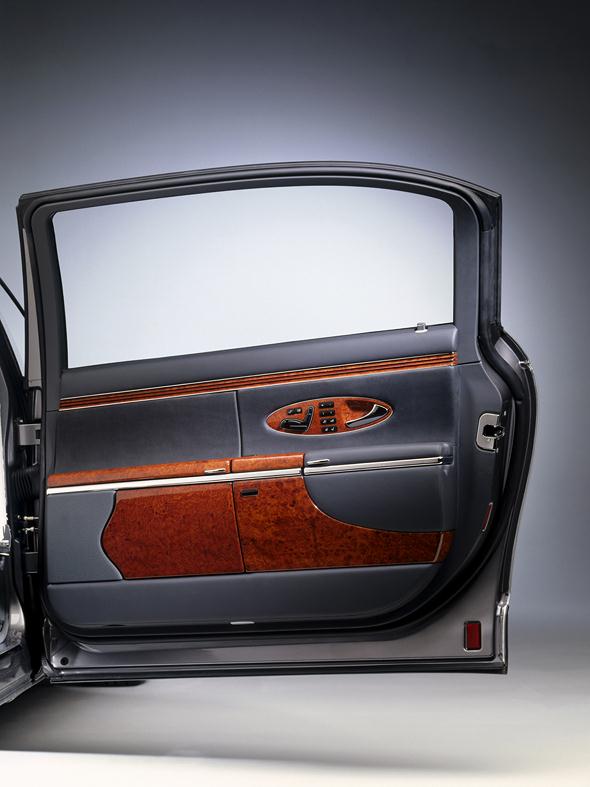
Maybach was well aware of his central role in the success of the first Mercedes, proudly proclaiming to Emil Jellinek, the open-minded businessman who commissioned the car one month after Daimler’s death and named it after his daughter, “You and I are the inventors of the Mercedes car.”
Wilhelm Maybach went on to develop further, technically peerless, Mercedes vehicles, cementing the recently founded brand’s position as the dominant force in international motorsport for years to come.

The joint venture with Zeppelin airship construction
In April 1907 Maybach left Daimler-Motoren-Gesellschaft and teamed up with his son Karl to continue working on his own designs.
He struck up contact with Graf Ferdinand von Zeppelin and convinced him that the engines he had developed together with Karl would also be perfect for powering airships.

This led to the two men establishing “Luftfahrzeug-Motorenbau GmbH” in Bissingen, near Stuttgart in 1909, as a subsidiary of the Zeppelin foundation and with Karl Maybach appointed technical director.
The maiden flight of the first Zeppelin powered by a Maybach engine took place in May 1910.

The company relocated to Friedrichshafen on the banks of Lake Constance in 1912, and moved in next-door to Zeppelin’s airship construction plant. This was one of the early joint ventures.
In the years after the First World War, however, there was a ban on the production of engines for airplanes or airships in Germany.
This was when Maybach turned his attentions to car engines, both as an alternative venture in economic terms and as a challenge to himself from a design perspective.

The first test cars with Mercedes chassis
In 1919 Karl Maybach, who was a gifted engineer in his father’s mould, began to build his own cars in Friedrichshafen. The first of these was the W 1, a test car based on a four-seater Mercedes chassis.
Karl Maybach had maintained from the outset that he had no intention of building a “Volkswagen”, a car which ordinary people could afford.
It was an assertion he reiterated at the Berlin Motor Show: “Before the major Association of the German Motor Vehicle Industry show in 1921, certain members of the Board asked me mockingly if Maybach was going to present the cheapest car of the lot.
They were rather upset when I replied: ‘No, the most expensive!'”

A passion for engineering
Karl Maybach was literally a child of technology. It was as a youngster experiencing the rapid development of the car at close quarters that he committed himself to following in the footsteps of his famous father.
He took on and further developed the pioneering ideas of Wilhelm Maybach with meticulous precision.
In January 1930 the magazine “Motor” was moved to write: “Dr. Maybach was one of our most enterprising design engineers and was rarely content to accept what his contemporaries were producing.
For every detail, he came up with new and technically fascinating solutions.”

As an automotive engineer, Karl Maybach was driven by technology in its purest form – in particular the constant development process involved in perfecting a powerful, smooth and durable engine, the invention of new and easy-to-use transmission systems and the optimisation of suspension units.
His instinct for technical perfection in even the smallest details built the foundations for the Maybach legend.
It was something the company’s highly discerning customers appreciated when they ordered their fully assembled, ready-to-drive chassis with frame, suspension, engine, transmission, radiator, firewall and other assemblies from Maybach in Friedrichshafen.

When it came to the car’s body, Karl Maybach and his staff only worked with the best specialists in the field, firms who could meet the requirements of the Maybach customers.
The fittings and finish were always dictated by the buyers’ personal wishes, giving the owners a car very much in their own image.
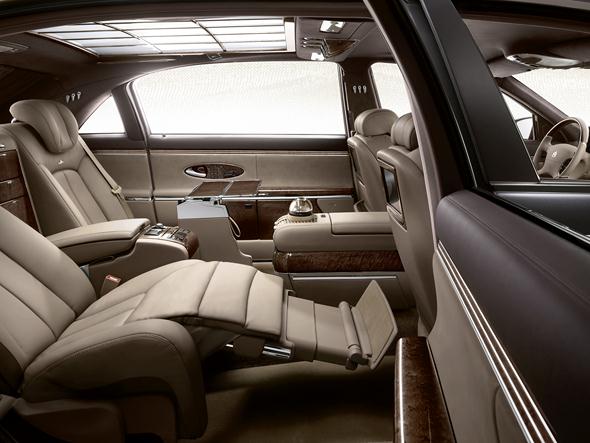
Over the years, Maybach struck up a close working relationship with the body manufacturer Herrmann Spohn, based in the neighbouring town of Ravensburg.
This partnership even spawned a kind of small-scale series production, although Spohn faced constant competition from other companies, such as Gläser in Dresden, Auer in Stuttgart, and Neuss and Erdmann & Rossi in Berlin to win the favour of the demanding clientele.
The body manufacturing workshop at the Daimler-Benz plant in Sindelfingen also received orders from Maybach, producing the body for the six-cylinder W 5 SG of 1928.

Made-to-measure craftsmanship down to the finest detail
Technical quality, customised design and flawless craftsmanship were the outstanding attributes of the incomparable Maybach cars.
The body manufacturers complemented the superb engineering of the chassis and engine with top-quality fittings worked into the body, itself lovingly hand-crafted.

This gave the exclusive clientele carte blanche to have their car tailored to their personal requirements and preferences – in principle, there were no limits to what was possible, except those imposed by the boundaries of the buyer’s imagination and their bank balance.

The result was automotive works of art, one-off cars of stunning elegance. There were stately limousines, majestic Pullmans, racy two to seven-seater coupés, stylish cabriolets and sporty roadsters.
Each boasted exclusive interior specifications, including exquisite leather and fine cloth appointments complemented by selected woods and paintwork, and a host of other refinements.
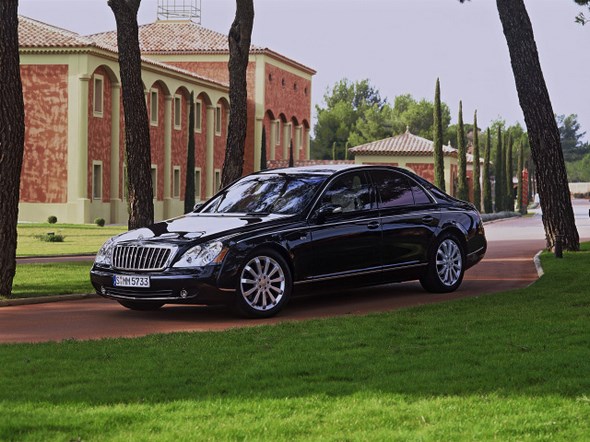
You would have been hard pushed to find two “MM”-badged cars the same. The most expensive Maybach of the time was a royal order in 1928.
Trimmed with gold and rubies, this limousine was sold to its owners for what was then a quite incredible 186,000 Reichsmarks.

Unrivalled driving pleasure in the “Zeppelin”
Captivating styling and precision, coupled with ground-breaking innovations, were attributes shared by the two most desirable German luxury cars of the 1930s: the large Mercedes 770 and the Maybach “Zeppelin”.
In January 1930, the magazine “Motor” described the “Zeppelin” in glowing terms: “It is an imposing, powerful and majestic car, which doesn’t overstate its inherent luxury.
This car has always embodied the greatest feeling of prosperity and beautifully crafted comfort.”
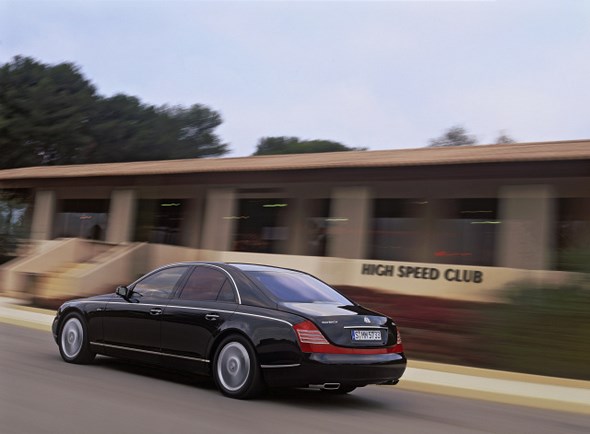
That was the aim of Dr. Karl Maybach. Indeed, he’d already shed light on his vision in the pages of “Motor” in December 1925: “When you’re building a first-class large touring car, the top priority is to cultivate a certain quality and to ensure that all the parts of the vehicle sit together in beautiful and comfortable harmony.
As well as top-quality workmanship, every part and major element of this car, such as its steering, engine smoothness, carburettor, brake system, noise insulation and operational reliability has to be explored and developed to the fullest degree.”

The “Zeppelin” was available as a saloon, sports cabriolet
The driving characteristics of his top-of-the-line car were equally impressive.
It had a long 3735-millimetre wheelbase and was very heavy, but rigid axles connected to long semi-elliptic springs allowed it to glide along almost nimbly.
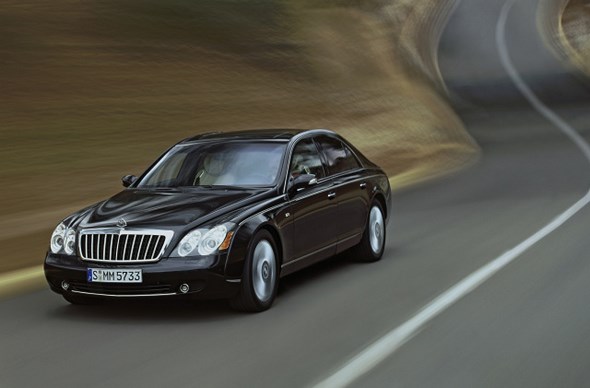
Hydraulic, double-acting shock absorbers further enhanced the ride comfort.
To move off, drivers still needed the clutch, but thereafter they only had to operate two small levers in the middle of the steering wheel in order to change through the four gears of the epicyclic transmission – without using the clutch.
Neutral, 1a or reverse could be engaged using the pre-selection hand lever in the centre of the car.
The worm-and-nut steering – not power assisted – was amazingly light given the 3-ton weight of this rather grand car.
The massive drum brakes were operated by cable, but offered even and effective deceleration thanks to a sophisticated lever system.
A vacuum-powered assistance system kept the power required to operate the brakes within limits.
The instrument panel in the “Zeppelin” was well equipped. There was a kilometre counter, speedometer, fuel gauge for the 135-litre tank, eight-day clock, coolant temperature display, oil-pressure gauge, vacuum gauge for the power-assisted brakes, starter injection mechanism, starter press-button, manual throttle and choke valve activator, and instrument illumination.
Other items of standard equipment included two spare wheels, horn, headlamps, stopping and reversing lights, taillights, four integrated jacks (one per wheel) and a small pump to inflate the tyres.

Replacement parts came as standard
In those days, factories and workshops authorised by Maybach were few and far between in Germany, Europe or further afield, and chauffeurs and drivers were no strangers to maintaining their distinguished cars themselves.
For that reason, the Maybach factory delivered each chassis with a comprehensive maintenance pack, containing 45 top-quality tools and 15 replacement parts – from valves to light bulbs – plus a selection of smaller parts.
This allowed the driver to carry out regularly-occurring maintenance and overhaul jobs without needing to visit a workshop.
Furthermore, precise instructions even meant that faults could be cleared up and larger repairs to the engine, suspension, wheels, exhaust and electrics carried out with ease.
The heartbeat of the Maybach “Zeppelin” was provided by the twelve-cylinder engine inspired by an airship power unit.
The engine was available with displacement of 6922 or 7922 cc.
Both versions were extremely impressive, developing a majestic 150 or 200 hp, at 2800 or 3200 revs per minute. The engine was smoothness personified.
Wilhelm Maybach was still alive to see the legendary “Zeppelin” flagship model take shape, but did not survive to witness the car’s launch. He passed away in December 1929.

Only 66 registrations a year
Their sophisticated construction and luxurious trimmings gave Maybach a timeless desirability. It was a combination which didn’t come cheap, and this secured the luxury car a particularly exclusive image.
According to statistics from 1 May 1931, of the 56,039 new passenger cars registered in Germany the previous year, only 66 were Maybach models.
A total of only 183 units were sold of the legendary “Zeppelin” in its DS 7 and DS 8 versions (DS stands for double-six, two banks of six cylinders).
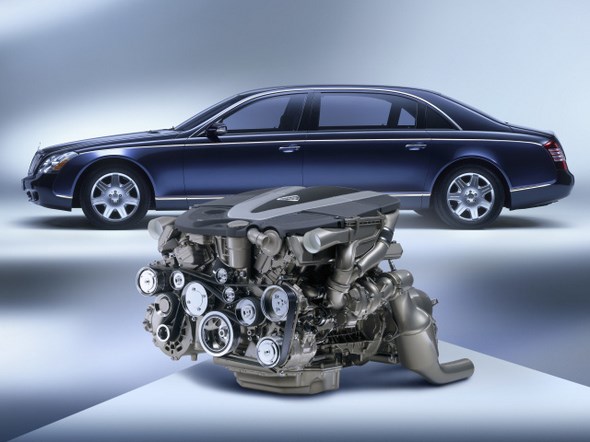
The production figures for the “Big Mercedes” were equally manageable: Daimler-Benz built 119 units of the W 07 between September 1930 and June 1938.
Another characteristic that the Maybach and Mercedes luxury cars had in common was their durability – some were a daily sight on the roads up until the late 1960s.
Indeed, of the Maybach cars produced up to 1941 – approximately 1800 – one in twelve – that’s 152 cars in all – still exists today.
High-society customers
For politicians and businessmen, princesses and emperors, stars and popular idols, Maybach cars were a means of transportation to befit their station.
Among the Maybach enthusiasts were famous names like the tenor Enrico Caruso and world heavyweight boxing champion Max Schmeling.
Then there were illustrious figureheads, decorated with titles of nobility, who also had themselves chauffeured around in a Maybach, notably the emperor of Ethiopia, Haile Selassi, King Paul of Greece and the heirs to the Dutch throne, Princess Juliana and Prince Bernard, Fürst Esterhazy and the Indian Maharajas of Jaipur, Potila and Kolhapur.
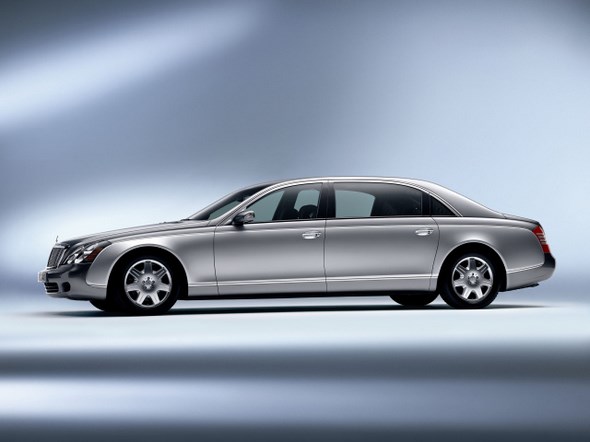
Of course, the Maybach customer list also included prominent figures in industry and high finance, including Werner von Siemens and Privy Councillor Robert Bosch.
The end of the Maybach era did not prove to be the death knoll for the luxury car class in Germany. Initially, the Mercedes-Benz 300 filled the vacuum.
Then, in 1964, the Mercedes-Benz 600 arrived to take over the mantle of the exclusive prestige limousine – a car on a similar plane to the Maybach designed for people how had “arrived”, for royalty and statesmen.
In production until 1981, it was a worthy successor to the “Big Mercedes” and also, in spirit, to the Maybach “Zeppelin”.

From Maybach-Motorenbau to MTU
In Stuttgart, the Maybach was far from forgotten. In 1960 Daimler-Benz acquired a majority holding in the Friedrichshafen engine plant.
Six years later, Maybach-Motorenbau merged with the large engine production wing of Daimler-Benz to form a new company – “Maybach Mercedes-Benz Motorenbau GmbH”, trading since 1969 as “Motoren- und Turbinen-Union Friedrichshafen GmbH” — or MTU for short.
In the memory, though, the name Wilhelm Maybach still held great importance. In 1996 Mercedes-Benz and MTU set out to honour his life’s work, successfully as it turned out.
In the year of the 150th anniversary of his birth, Wilhelm Maybach, the brilliant design engineer, was accepted into the “Automotive Hall of Fame”.

